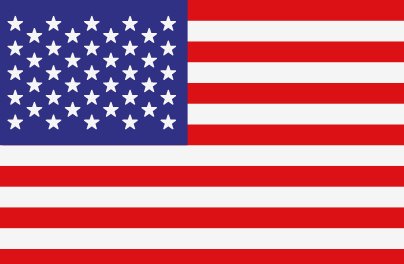
MK.1 Potato Planter
Find out moreDuring the wartime potato planting season of 1940 a novel potato planting machine was produced which not only planted the seed potatoes but also placed fertilizer around them during the planting operation. Such was the importance of this machine in wartime Britain, that the War Agricultural Executive Committee commandeered the design and component stocks.
The machine operated on the principle that many automatic potato planters use to this day, in that a chain with cups moving vertically upwards through a hopper full of seed potatoes automatically fills itself. If the cup missed filling itself, then the operator placed a potato in the cup to ensure no misses.

Company Incorporated
Find out moreTeagle Machinery became a limited company in 1943, when the first Teagle logo was developed, and was based on an art deco brooch design.
The main element of this strong brand logo was in the form of an eagle with angular wings and circular discs to form a badge. This mark was used extensively from 1943 until 1969.

Tractor Loader Stacker
Find out moreThe Loader-Stacker, produced to replace both the hay sweep and hay pole was a machine too far ahead of its time. It was capable of delivering 1/2 ton of hay to a height of 24' (7 metres) and its design incorporated the first `push off' type of buckrake.
The operation of the machine was completely mechanical, with friction rollers and brake pads, operating on a large winch drum, all controlled by one lever. A full set of options were available for the Loader-Stackers, including dung forks, shovels and dozer blades.
Although very few of these machines were manufactured, it was not until tractors were fitted with external hydraulics that the Loader-Stacker machine was superseded by the tractor front end loader.

Trailed Broadcasters
Find out moreThe Mk.1 Trailed Broadcaster was the forerunner of the many thousands of fertiliser broadcasters to be manufactured at the Blackwater factory. The machine, simplicity itself, had its rotor driven from the ground wheels through a round belt around two idler pulleys through 90 degrees to the rotor. The hopper was raised or lowered onto a cone in the centre of the rotor allowing the fertiliser flow to be either closed or regulated to give the required sowing rates.
About 14,000 of these machines were made with little competition from other manufacturers, until at one Smithfield Show 17 other machines appeared, two of them fitted with Teagle castings, still with Teagle part numbers!

Two stroke 49cc engine
Find out moreDuring the early 1950's a major design project was to speed the laborious task of hedge trimming. By 1953, having been unable to find an engine light enough to fit onto a hand held trimmer, Tom Teagle, with no previous experience in precision engineering, designed and began manufacturing a 50cc two stroke engine.
The Teagle 50 cc two stroke engine was of totally novel design - with an overhung crankshaft and the flywheel magneto supported on an outrigger bearing housing. The crankshaft which was supported by two large ball bearings was fabricated with the crank pin running in a grove in the crankcase cover to provide forced lubrication to the needle bearing big end.

Multi-level bale elevators
Find out moreTeagle produced the worlds first multi-level bale elevator, designed after Tom Teagle noticed staff throwing bales onto the floor from trailers, only to be handled again onto an elevator to be lifted to the rick.
With the multi-level elevator the lower end of the conveyor could be raised to enable bales to be easily dropped onto the elevator bed by the operator on the trailer. To adjust their heights, the elevators had a spring counterbalanced knee-frame assembly at the bottom end, and a winch at the delivery end. Bale platforms at the top of the conveyor helped to slide the bales onto the rick.

Tipmix cement mixer
Find out moreThe concept of a cement mixer that could be mounted onto a tractor created quite a headache for the designers. Eventually a machine using the principle of driving the drum from a roller mounted on the P.T.O. was developed and named the Tipmix. The early machines were driven through a rubber tyre fitted on the drum. Experience showed that the tyres did not last well, so they were replaced by a cast gear. The mixer was tipped from the tractor seat, using the lifting action of the hydraulic arms.

From farm to factory
Find out more
Tracut hedgecutter
Find out moreIn 1957 work began to develop a tractor mounted hedgecutter, and by 1958 the Tracut was launched.
A simple lifting mechanism using the tractor lift arms did away with the need for any external hydraulics. The early machines were supplied with a parallel linkage to the cutter-head, but the angle could only be altered by getting off the tractor and adjusting it with a spanner.
The requirement to manufacture tooling for the large pressed `V' belt pulleys for the tractor mounted hedgetrimmers gave the toolmaking department many headaches, but the experience gained in the effort put them in good stead for making all manner of large pulleys in the following years.

Matchless mower
Find out moreAs tractor horsepower increased, manufacturers began to develop rotary mowers to cut silage and hay. Most of these machines were designed for operating directly behind the tractor with the inherent problem of the tractor wheels running on the crop. The Teagle design staff, with their dislike of complicated linkages and gearboxes, designed a belt driven totally offset 5' cut rotary mower that would fold for transport, the Matchless. Produced in a matter of days using bits and pieces of the crop drying fans. The largest single order ever placed for Matchless mowers arrived from Australia in 1967 after a one day demonstration in Victoria, 250 machines were sold! The machines proved virtually indestructible with farmers reporting how their mower had demolished harrows or other implements lost in the grass, without any damage to the mower.

Titan trailer
Find out moreFor several years up to 1969 Teagle were making small trailed manure spreaders of three and four ton capacity. These trailer spreaders with moving floors and spreading rotors, had wooden bodies, but it was calculated to be more economical to make them from steel pressings. The purchase of three 200 ton pressbrakes to bend the panels enabled the design of a trailer spreader of 7 ton capacity to be considered. With the complexities of the drive to the rotors holding back the development of the trailer spreader, caution was thrown to the wind and a set of panels were pressed for a 7 ton tipping trailer. As most of the silage being carried in the late 1960's was in small capacity 4 ton trailers, the arrival on the market of a 7 ton high capacity silage trailer caused quite a stir. The Titan 7 trailer filled a long awaited need of the large dairy farmers and silage contractors in the South West and sold in large quantities. It is estimated that there are over 4,000 Titan trailers in the counties of Cornwall, Devon, Somerset and Dorset.

Teagle logo update
Find out more
Dynacut flail hedgecutter
Find out moreThe first models of Dynacut, the 300 and 400, were designed on the same principle as the Tracut hedgecutters. They met with reasonable success, but were difficult to mount onto the tractor, so two new models were soon produced to improve on them, the Mk ll and Series A.
The Mk ll was exported in large quantities to France, while the Series A was more suitable for the UK market. Very soon, to complement this range of hedgetrimmers, hydraulic drive models were introduced, firstly the well known S, SX, SB, and SBX, and later the very successful Dynacut Model K with the parallel linkage boom.

Toucan forage wagon
Find out moreIn contrast with the imported Loader Wagons, the Toucan was a precision chop forage wagon of substantial construction that could be converted at the end of the silage season into a conventional tipping trailer. The harvester unit was carried on a sub chassis which could be easily removed from the trailer in a matter of minutes.
When in operation, the harvester unit followed the contours of the ground on its own wheels, with about three quarters of its weight transferred onto the tractor drawbar. This, together with its effective hydraulic braking system enabled the Toucan to be used on slopes that would not be safe for conventional harvester units. When in the late 1980's the JF 110 harvester became no longer available, a Teagle harvester unit was designed.

The second generation
Find out more
Spiromix cement mixer
Find out moreThe special feature of the Spiromix cement mixer was that instead of tipping as with conventional mixers, a reverse mechanism was built into the drive and the mixture was augered out of the drum similar to a ready-mix lorry.
This design left no restriction on size - only what the tractor could carry, and larger models were soon produced to increase the range.

Lightning bale shredder
Find out moreAt a time when straw was becoming expensive, ministry advisers began explaining that if straw was chopped finely, only about one third as much would be needed to bed down the same number of stock.
The Lightning straw shredder filled that very need, but as well as being able to chop root crops and potatoes, the shredder was also used for many other duties as diverse as chopping paper, plastics and materials for composting.
This product marked Teagle's entry to the bale processing market for which it's Tomahawk brand is recognised globally today.

Topper 8
Find out moreThe Mk 2, 8' Topper replaced the earlier model. As well as being easier to manufacture, it was more convenient for the driver to operate and service. The Mk 2 Toppers are of a more conventional design than the earlier machines, and are fitted with a gearbox and belt drive and are fitted with spring steel swinging blades and a sliding headstock to adjust the offset behind the tractor. The later 6' and 10' models were designed on very much the same theme.

Tomahawk bale shredders
Find out moreIn 1988 the full range of Teagle baled straw shredders were called 'Tomahawk', a name that has been synonymous with quality bedding and feeding machinery ever since.
The early models produced with drums to take round 5' bales were a breakthrough in evenness of chop and manoeuvrability around the farmyard. The Teagle machine was lighter and the centre of gravity of the bale was closer to the tractor than its competitors, enabling the machine to be used on smaller tractors.

Teagle logo
Find out moreIn 1989 the eagle was dropped from the logo, and a more modern style Teagle logo was introduced.

XT broadcasters
Find out moreThe XT range of Broadcasters was introduced, designed specifically for the livestock farmer. The double overlap spreading system with stainless steel rotors and shutter system is accurate and durable, with a tilt mechanism fitted as standard for spreading headlands.
A corrosion resistant hopper is manufactured from UV resistant polypropelene which is also easy to clean.
The XT20, XT24 and XT48 models remain in the product line-up today.

Celebrating 50 years
Find out moreAfter the passing of Tom Teagle in 1989, the Teagle Board of Directors was restructured with Fred Teagle as Chairman.
In 1993 the company celebrated 50 years since incorporation.
From the left, Fred Teagle, Geoff Osborne, Mary Teagle, John Teagle, David Teagle

Super-ted swath conditioners
Find out moreThe high speed swath conditioners, introduced in 1.6m and 2.2m pickup widths, were designed to aerate crops of silage, hay and straw. This significantly increases the drying rate, reducing nutrient loss and creating even swaths for the next operations.
The Super-ted 221 remains in the product line-up, offering a high output, single pass operation.

First box bale processors
Find out more1998 saw the introduction of the first Teagle box type Bedders. These machines were complete with twin cross beaters, driven by a 90° gearbox mounted on the side panel. They were only available with either a right hand delivery chute, or a swivel chute.

Berti flails
Find out moreTo increase the range of models on offer for the grass topping market, in 2002 Teagle began importing the Berti range of Flail Mowers.
There are now over 6000 Berti machines distributed by Teagle in the UK and Ireland, with a comprehensive range on offer which includes models for tractor, excavator and skid steer mounting.

Tomahawk Dual Chop System
Find out moreThe Dual Chop was an important development in teh Tomahawk range - a machine that would deliver both finely chopped straw or full length straw, just by the flick of the switch in the tractor cab.
The machine was originally designed for farmers needing to chop straw for cubicles, as well as bed loose housing, but now finds applications from preprocessing straw for TMR to Bioenergy and Soil Erosion Prevention.
Current models fitted with 'Dual Chop' include the 8250SM, 8250ST and the 8555.

Tomahawk 8500
Find out moreAs balers were increasing in size, export customers in USA and former CIS countries required wider capacity Tomahawks, so a model with a wider body was designed.
This model has been adopted in most countries by larger farm operations as it has the added advantage that the extra width offers easier loading, higher output and blow distance even on standard bales.

Robot welding
Find out moreWith many years of experience of CNC lathes and plasma profiling, Robot Welding was introduced. The welder, with its articulated arm, and manipulator, can weld large complicated parts with unparallelled accuracy and quality.
Automated welding is now central to production at Teagle, with 3 robots producing a high proportion of finished compoenents.

Titan 10 & 12
Find out moreHaving sucessfully imported and distributed rear discharge manure spreaders from France for a number of years, Teagle decided to use the experience gained to design and manufacture their own machines - reviving the 'Titan' brand with the Titan 10 and Titan 12 models.
A new production hall was built as the machines pushed the company's capacity to the limit.
Further models have since been added to the range, the Titan 6, Titan 8 and Titan 9, Titan 15 and Titan 17.

Telehawk
Find out moreThe increasing popularity of Telehanders on farms in the UK encouraged a number of farmers to look for more ways to utilise the convenience of a Telehandler and make use of the flexibility that it can offer.
In 2014 Teagle developed the Telehawk - a self-loading, hydraulically driven bale processor designed for telehandlers and loaders, enabling efficient straw bedding distribution. Featuring a swivel chute for precise placement, adjustable discharge speed, and a high-capacity fan for even spreading of straw up to 13.5 metres.
The current version of this model the Tomahawk 6200H remains in the product line-up.

Tomahawk C12
Find out moreThe Tomahawk C12 ‘Calibrator’ was designed for large scale farms and contractors working with a number of clients who need to achieve consistently short ‘calibrated’ material for their business.
Capable of processing materials with a moisture content up to 20% at up to 11 tons/hr. The principal applications are straw processing for homogenous incorporation into TMR rations. Complimentary applications are also found in bedding livestock and the biomass/biogas sectors.
The upgraded Tomahawk C120 'Calibrator' remains in the product line-up and is now available with a grain milling hopper to increase the flexibility of the machine.

Production Plant
Find out moreNewer buildings in the photo include a dedicated R&D production facility and design office, precision machining and 'Large Product' halls, as well as a Powder Coat paint plant, itself upgraded in 2022.
The only buildings remaining from the 1950’s plan are the farmhouse and the cattle shed (now replacement parts storage and dispatch) in the centre of the photo.

Electric Bale Processing
Find out moreWith farmers and bio-plants looking for improved efficiency, an electric drive version of the Tomahawk 505M was developed.
This model is available with a Loading Conveyor, so that the machine can operate and process material automatically, as well as cyclone options for dust removal.

Paint Line Upgrade
Find out more
King's Award for Export
Find out moreThe King’s Award for Export was awarded to Teagle in recognition of a significant increase in Export Sales over a three year period.
The award was presented by the King’s representative in Cornwall, the Lord Lieutenant, Colonel Sir Edward Bolitho.

Tomahawk 6100H
Find out moreOur most compact bale prcessor to date!
Introducing the most recent addition to our Tomahawk product lineup, the Tomahawk 6100H. Designed to fit compact loaders, tractor front loaders and skid steers for straw bedding and landscaping operations.
| International TEAGLE MACHINERY LTD | IRE CIS CAN ES IT NL | |

|
United Kingdom TEAGLE.CO.UK | UK |

|
France/Francais TEAGLE.FR | FR |

|
US/English TEAGLEMACHINERY.COM | US |

|
Germany/Deutsch TEAGLE.DE | DE |